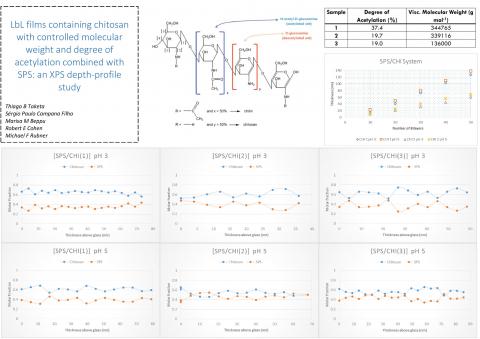Presenter:
Thiago Bezerra Taketa
Abstract:
In this work, the nanostructured films were built by the layer-by-layer (LbL) technique, in which the interaction among species with opposite electrostatic charges is, in most cases, the primary phenomenon responsible for the formation of multilayers. Specifically, we focused on the cationic biopolymer chitosan (CHI), a linear polysaccharide, usually obtained from the deacetylation of chitin, one of the most abundant naturally occurring polymers, which makes CHI an interesting component due to its widespread availability. However, the main properties and applications of chitosan depend on its average degree of acetylation (DA), defined as the average content of GlcNAc units along the chitosan chains, average molecular weight and dispersity. Thus, the development of efficient processes to produce chitosan with controllable characteristics is essential. In the work reported here, the ultrasound-assisted deacetylation (USAD) process was applied to beta-chitin from Loligo sp.. USAD is an efficient process for the production of chitosan, allowing the obtainment of chitosan with variable DA and viscosity-average molecular weight (Mv), these characteristics being determined by appropriate adjustment of the process parameters (e.g. temperature, irradiation amplitude and duration of ultrasound). Combining the production of LbL films containing controlled chitosans with XPS depth profile technique allows us to elucidate the role of the CHI on the multilayer formation. The strong polyanion sodium polystyrene sulfonate (SPS) was chosen to pair chitosan in this study. Results have shown that different molecular weights and DA led to distinct CHI:SPS ratio along the LbL film, specially when CHI presents a higher DA and a lower Mv.
